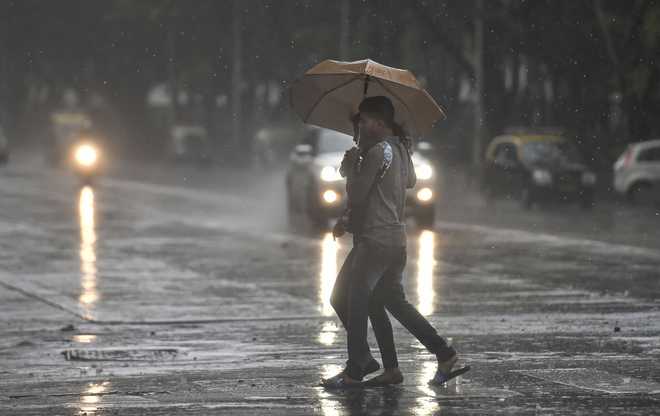New Delhi: Sending a positive signal to the India’s agriculture sector, especially large tracts of unirrigated fields, the IMD on Thursday said the southwest monsoon for the year 2022 will be in the ‘normal’ range and also fairly well distributed over most parts.
Overall, the seasonal rain will be 96 per cent to 104 per cent of the Long Period Average (LPA) of 87 cm of the 1971-2020 period during the June-September period.
Monsoon is considered normal if it falls under 96 to 104 per cent of LPA
However, from this year, the weather office also introduced a new rainfall normal figure based on 1971-2020 data, showing a marginal decline in monsoon rainfall and overall annual rainfall in the country over the long period.
As per the ‘new normal’, all-India rainfall is 87 cm as against the earlier normal figure of 88 cm based on the 1961-2010 period. The IMD did not rule out the possibility of the impact of climate change on the decline in rainfall over a longer period of time.
Quantitatively, rain is likely to be 99% of the LPA with a model error of +/- 5%. Though northeast, some parts of northwest and southern parts of the South Peninsula will receive ‘below normal’ rainfall.
“Spatial distribution suggests ‘normal to above normal’ rain over many areas of northern parts of Peninsular India and adjoining Central India, over foothills of the Himalayas and some parts of Northwest. Northeastern states, northern parts of northwest India and southern parts of Peninsular India are likely to get below normal rainfall,” IMD Director-General Mrutyunjay Mohapatra said.
However, this will not affect agriculture operations as rain-fed parts will get “normal to above” rain. There is a 40% probability of ‘normal’ rains, 15% of ‘above normal’ and 5% of ‘excess’ rain. In other words, there is 60% probability of good rain in the country
Currently, La Niña conditions are prevailing over the equatorial Pacific region, which are likely to continue during the season. The IOD conditions over the Indian Ocean are neutral, which will continue until the beginning of the season. Thereafter, there is an enhanced probability for negative Indian Ocean Dipole (IOD) conditions.
As sea surface temperature (SST) conditions over the Pacific and the Indian Oceans are known to have strong influence on Indian monsoon, the IMD is carefully monitoring the evolution of sea surface conditions over these ocean basins
In 2021, the country received “normal” rain. This was the third consecutive year the country recorded rainfall in the normal or above-normal category.
Rain was above normal in 2019 and 2020.
New normal
Earlier, the IMD used to consider the LPA of 88 cm of the 1961-2010 period. “All-India rainfall normal based on 1971-2020 (period) for the southwest monsoon season is 868.6 mm. It will replace the normal of 880.6 mm based on 1961-2010,” the IMD said
New normal has been computed using rainfall data of 4132 rain gauge stations well distributed over the country, representing 703 districts.
“The decrease is part of natural multi-decadal epochal variability of dry and wet epochs of all India rainfall. Presently, the southwest monsoon is passing through a dry epoch that started in the decade of 1971-80.
“The decadal average of all-India rain for the decade 2011-20 is (minus)-3.8% of the long-term mean. The next decade, 2021-30, is expected to come closer to neutral and monsoon would enter into the wet epoch from the decade 2031-40,” Mohapatra said


